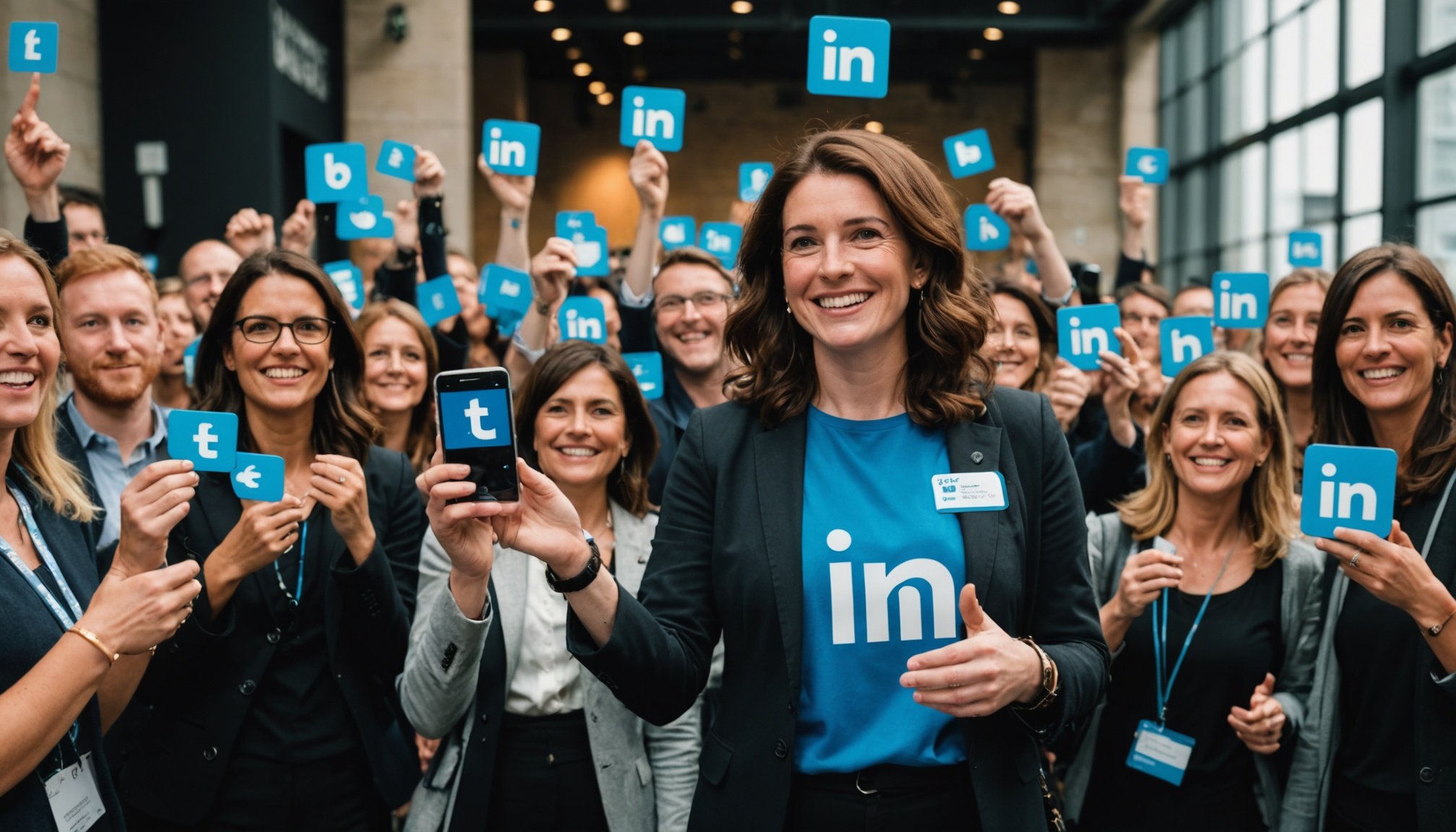Understanding LinkedIn as a B2B Marketing Tool
In the realm of B2B marketing, LinkedIn has carved out a significant niche, especially for sustainable brands seeking growth and visibility. This platform is uniquely equipped to support sustainable brands through its expansive network of professionals, providing a direct line to decision-makers and industry leaders. The role of LinkedIn in B2B marketing is pivotal as it fosters connections, encourages partnerships, and facilitates knowledge sharing.
The Role of LinkedIn for Sustainable Brands
LinkedIn offers unparalleled opportunities for sustainable brands to amplify their message within the business community. With its emphasis on professional networking, companies can engage with audiences deeply interested in sustainability and eco-friendly innovations. This interaction is crucial for establishing thought leadership and developing trust with potential partners in the B2B space.
In parallel : Mastering pinterest: the ultimate handbook for uk candle makers to showcase creative diy craft inspirations
Unique Features for the UK Market
The UK’s vibrant business landscape greatly benefits from LinkedIn’s unique features, aiding sustainable brands in reaching and connecting with a local market that values sustainability. LinkedIn’s analytics tools offer UK brands market insights and help tailor strategies that align with regional preferences and trends.
Current Trends Among UK Businesses
Trends indicate an increasing number of businesses in the UK are leveraging LinkedIn to enhance their B2B marketing strategies. This includes using the platform for sustainable initiatives and targeting audiences interested in corporate responsibility. These strategies are helping businesses differentiate themselves in a competitive market.
This might interest you : Elevate your fitness game: the uk trainer’s ultimate playbook for boosting engagement with instagram reels and quick workout insights
Optimizing LinkedIn Profiles for Maximum Impact
Creating a powerful LinkedIn profile requires careful attention to several key elements. First, a robust headline that clearly communicates your professional identity is essential. For example, using a headline like “Expert in Branding for Sustainability” directly highlights your expertise and attracts attention from potential B2B clients interested in sustainable solutions.
When describing your experience and skills, focus on sustainability and how it integrates with your professional endeavors. This can involve articulating how you implement sustainable practices within your operations or the broader impact you seek to achieve. This branding for sustainability not only enhances your professional image but also solidifies your profile as environmentally conscious.
Moreover, clear and concise descriptions of your products or services should emphasize their alignment with sustainable values. This might include showcasing environment-friendly features or detailing any certifications that validate your commitment to sustainability.
Additionally, multimedia elements like videos or infographics can effectively convey your sustainability narrative. These techniques not only make your profile visually appealing but also demonstrate innovation and credibility in tackling environmental challenges. By strategically incorporating these elements, your LinkedIn profile becomes a magnet for attracting like-minded B2B clients, ultimately amplifying your professional network and opportunities.
Creating Engaging Content for LinkedIn
Crafting engaging social media content on LinkedIn is crucial for brands, especially in B2B markets aiming for sustainable impact. What types of content drive engagement? Sustainable brand storytelling is a key component. It weaves a narrative that resonates with audiences on a deeper level. This can be achieved through a mix of visual storytelling and detailed case studies.
Visual storytelling provides a dynamic and eye-catching way to present information, making it more memorable and shareable. For instance, use high-quality images or videos that reflect your brand’s core sustainable values. Case studies, on the other hand, offer concrete examples of how your initiatives or products make a real-world impact, enhancing credibility and authentic connection with the audience.
When it comes to B2B engagement strategies, consider your post frequency and timing. Consistent posting is important but avoid overwhelming your followers. Aim for a balance: frequent enough to remain top-of-mind but not so frequent that it becomes noise. Timing is also crucial; identify when your target audience is most active on the platform to maximize visibility.
In summary, using these strategies effectively can enhance your brand’s presence on LinkedIn, driving greater engagement and fostering stronger B2B connections.
Building and Leveraging Connections
Building meaningful and sustainable business connections is crucial for professionals navigating the sustainability sector. Key to this process is developing effective LinkedIn networking strategies. Focus on connecting with stakeholders who align with your values and industry goals. Start by identifying profiles of key players in the sustainability field and engage with their content, join relevant groups, and participate in discussions to increase visibility and credibility.
Creating a targeted networking approach on LinkedIn is essential for relationship building. Tailor your connection requests with personalized messages that highlight common interests or mutual connections. This not only makes you memorable but also demonstrates genuine interest in the other person’s work. Consistent interaction, such as commenting on posts or sharing insightful content, helps maintain these connections.
Leveraging existing connections can significantly expand your reach and influence. Use your current network as a bridge to new opportunities by asking for introductions to others in the field. Regularly engage with your connections through sharing valuable content or requesting feedback on shared projects. Strong relationships cultivated over time can lead to collaborations and career advancements within the sustainability sector.
Analyzing Performance and Optimizing Strategy
Understanding the performance tracking on LinkedIn is crucial for enhancing B2B marketing effectiveness. By leveraging various tools and metrics, businesses can gain valuable insights into their campaigns. One such tool is LinkedIn’s Campaign Manager, which provides an overview of campaign performance indicators like click-through rates, engagement levels, and audience demographics.
When evaluating campaign effectiveness, it’s essential to focus on specific metrics that align with business goals. For instance, tracking the engagement rate can help in assessing how well the content resonates with the target audience. Alternatively, conversion tracking might be more relevant for campaigns aimed at driving direct business results.
But how can one optimize their strategy based on these insights? The key is adjusting strategies based on the analytical data gathered. If a particular ad targeting isn’t yielding the desired results, marketers might need to reassess the chosen audience or tweak the messaging. Regularly reviewing these analytics can guide strategic pivots and enhance overall marketing tactics.
For example, several case studies have illustrated successful B2B engagements achieved by fine-tuning marketing efforts through LinkedIn analytics. These cases underline the importance of a data-driven approach in crafting effective marketing campaigns tailored for success.
Inspiring Case Studies of Successful Brands
Examining successful sustainable brands can offer valuable insights for those aiming to make a mark on LinkedIn. Let’s delve into some inspiring stories and strategies.
Brands that lead in sustainability have harnessed LinkedIn as a powerful tool. They often share compelling success stories that resonate with their audiences and environmental goals. By crafting content that aligns with their sustainable vision, they not only engage existing followers but also attract new ones. Key tactics include sharing impactful case studies, fostering discussions through informative posts, and utilizing LinkedIn’s advanced analytics to tailor their strategies.
In the realm of B2B marketing, these brands prioritize transparency and authenticity. One effective method is highlighting sustainability achievements, such as carbon footprint reduction or innovative eco-friendly products. They also engage in meaningful collaborations, positioning themselves as industry leaders.
For UK brands eyeing these successes, the lessons learned are invaluable. Emulating best practices involves consistent storytelling that underscores a brand’s sustainable mission. Taking these steps can enhance credibility and foster a community that supports both environmental efforts and business growth. By leveraging LinkedIn adeptly, sustainable brands can not only thrive but also inspire a shift towards a greener economy.











